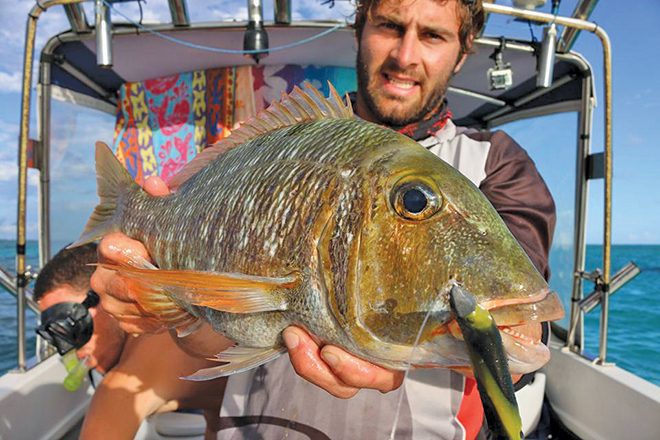No one reading this can honestly say they wouldn’t rather be on a remote lagoon fishing the Great Barrier Reef in crystal-clear conditions. It is my favourite place in the world and one that, as soon as I leave, I’m dreaming of the next time I can go back. coral trout flats

The variety of fish is unparalleled to anywhere I have dropped a line. The wildlife, raw nature and sense of adventure that comes with a live-aboard trip is my happy place.
Though, sometimes the weather can play up and carry on a little too much. It is important for a safe adventure to time it in accordance with weather forecasts, maps and charts. When so much planning goes into a trip, it can be quite deflating to pull the pin because of poor conditions. coral trout flats
We have been hit by unexpected weather and the safest option was to spend a few days exploring sheltered parts of a lagoon. In this case, we found some of the most productive options to be tidal dependent. This article will explore chasing fish on the flats and what to expect. coral trout flats
Tides
Depending on the shape and type of reef, these options can vary. If there are large coral flats, this rule is generally applicable. We tend to fish the hour before a high tide and start to make our way off the reef when the tide shows signs of receding. If this type of fishing is new to you, always fish the rising tide before moving off the reef. The last thing you need is to be high and dry in the middle of the Great Barrier Reef.
A high tide will flood the lagoons and water rises up onto the flats. The majority of baitfish retreat to these shallow sections to avoid getting picked off by bigger predators on the edges of the reefs. Here they can feel somewhat safe, hiding between coral ledges and bommies. Little do they know, they are being stalked.

Coral trout will move into the flats and ambush prey swimming past their vantage point, usually in the shadows of overhanging coral or in deeper pools. If there is a breeze, you can tilt your motor up and drift along the top of the flats, casting 360 degrees of the boat with a fast retrieve and looking for the fast reaction bite that is required of the expecting predators. Ideally, an electric motor can be used to accommodate for drift if there isn’t one and allow ideal zones to be fished.
The patchier the reef with deeper holes, the better. Always have someone at the front of the boat on the look out for dangers. Use the sounder to ensure the water is deep enough to accommodate the draft of the boat and a little more. When the tide is falling, you can run back out to the edges of the lagoons where the water is spilling into deeper sections, look for channels in particular. Here, cast around bigger poppers or stickbaits because you will find a few larger specimens that have been waiting patiently for a feed.
 Bush 'n Beach Fishing Magazine Location reports & tips for fishing, boating, camping, kayaking, 4WDing in Queensland and Northern NSW
Bush 'n Beach Fishing Magazine Location reports & tips for fishing, boating, camping, kayaking, 4WDing in Queensland and Northern NSW








